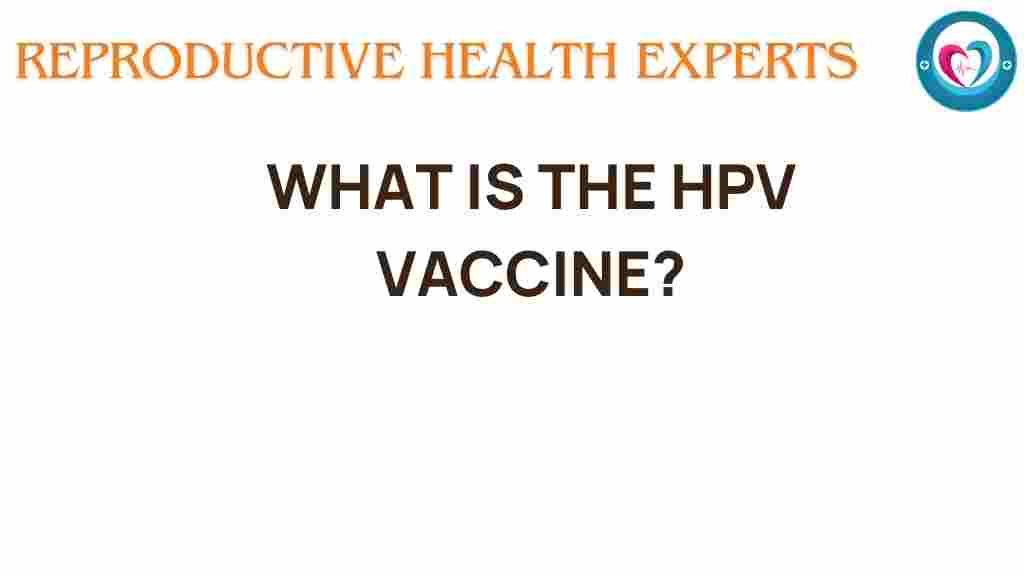Unveiling the HPV Vaccine: What You Need to Know
The HPV vaccine is a critical tool in the fight against human papillomavirus (HPV) and its associated health risks, including various types of cancer. As awareness grows about the vaccination benefits, it’s essential to understand the significance of this vaccine in public health, especially regarding adolescent health. This article will explore the HPV vaccine in detail, covering its importance, how it works, the benefits of vaccination, and the broader implications for cancer prevention and community health.
Understanding HPV and its Risks
Human papillomavirus (HPV) is a group of more than 200 related viruses, of which around 40 can be transmitted through direct sexual contact. HPV is one of the most common sexually transmitted infections and can lead to several health issues, including:
- Cervical cancer
- Anal cancer
- Oropharyngeal cancers
- Penile cancer
- Vulvar and vaginal cancers
While most HPV infections are harmless and resolve on their own, persistent infections can lead to cancer in both men and women. This highlights the importance of the HPV vaccine in preventing these serious health outcomes.
What is the HPV Vaccine?
The HPV vaccine is designed to protect against the most common cancer-causing strains of the virus. There are several HPV vaccines available, including Gardasil and Cervarix, which are effective against the high-risk types of HPV. The vaccine is recommended for preteens aged 11 to 12, but it can be given as early as age 9 and up to age 26. Some individuals aged 27 to 45 may also benefit from the vaccine, depending on their risk factors.
Vaccination Benefits
The HPV vaccine offers numerous benefits, which include:
- Cancer Prevention: The primary benefit of the HPV vaccine is its ability to prevent cancers caused by HPV, especially cervical cancer.
- Reduction of HPV Transmission: Widespread vaccination can help lower the overall rates of HPV transmission in the community.
- Enhanced Public Health: By reducing the incidence of HPV-related diseases, the vaccine contributes to better public health outcomes.
- Long-lasting Protection: Research shows that the HPV vaccine provides long-lasting protection against targeted HPV strains.
- Improved Adolescent Health: Vaccination at an early age promotes healthier lifestyles and reduces the risk of future health complications.
How the HPV Vaccine Works
The HPV vaccine works by stimulating the immune system to produce antibodies against the virus. Here’s a step-by-step process of how the vaccination works:
- Administration: The vaccine is typically given as a series of two or three shots over six months. The exact number of doses depends on the age at which the vaccination series is started.
- Immune Response: After vaccination, the body begins to create antibodies that can recognize and fight the HPV virus.
- Protection: If the vaccinated person is later exposed to HPV, their immune system is prepared to attack the virus, preventing infection or disease development.
Who Should Get the HPV Vaccine?
The HPV vaccine is recommended for:
- Preteens aged 11 to 12 years old.
- Individuals aged 9 to 26 who have not yet been vaccinated.
- Some adults aged 27 to 45, based on individual health needs and risks.
It is essential for parents and guardians to discuss the vaccine with healthcare providers to determine the best course of action for their children’s health.
Addressing Common Concerns
Despite the proven benefits of the HPV vaccine, some individuals may have concerns about its safety and efficacy. Here are some common questions answered:
Is the HPV Vaccine Safe?
Yes, numerous studies and extensive monitoring have confirmed that the HPV vaccine is safe. Side effects are typically mild and can include:
- Pain at the injection site
- Fever
- Dizziness
- Nausea
Why Should My Child Get Vaccinated?
Vaccinating children at the recommended age ensures that they are protected before they become sexually active. It also contributes to the overall reduction of HPV-related diseases in the community, promoting better public health.
Increasing Awareness and Education
Awareness and education about the HPV vaccine are crucial in combating misinformation and promoting vaccination. Here are some ways to increase awareness:
- Community Programs: Organize workshops and seminars to educate parents and adolescents about the vaccine.
- School Health Initiatives: Collaborate with schools to provide information on the HPV vaccine as part of health education curricula.
- Online Resources: Utilize social media and websites to disseminate accurate information about the HPV vaccine and its benefits.
For more information on HPV and vaccination benefits, visit the CDC HPV page.
Immunization: A Public Health Priority
Immunization against HPV is a public health priority. By increasing vaccination rates, we can significantly reduce the incidence of HPV-related cancers. Here’s how communities can support HPV vaccination:
- Access to Vaccination: Ensure that vaccines are available in schools, clinics, and community health centers.
- Insurance Coverage: Advocate for insurance policies that cover the cost of the HPV vaccine without co-pays.
- Support from Healthcare Providers: Encourage healthcare providers to discuss the HPV vaccine with patients during routine check-ups.
Conclusion
The HPV vaccine is a vital component of cancer prevention and public health strategy. By understanding the benefits of the HPV vaccine and advocating for its use, we can protect future generations from the risks associated with human papillomavirus. Increasing awareness, improving access, and fostering a culture of immunization are essential steps in ensuring that everyone has the opportunity to benefit from this life-saving vaccine.
For more insights on vaccination and public health, feel free to explore our other articles on health and wellness.
This article is in the category Prevention and created by ReproductiveHealthExperts Team
